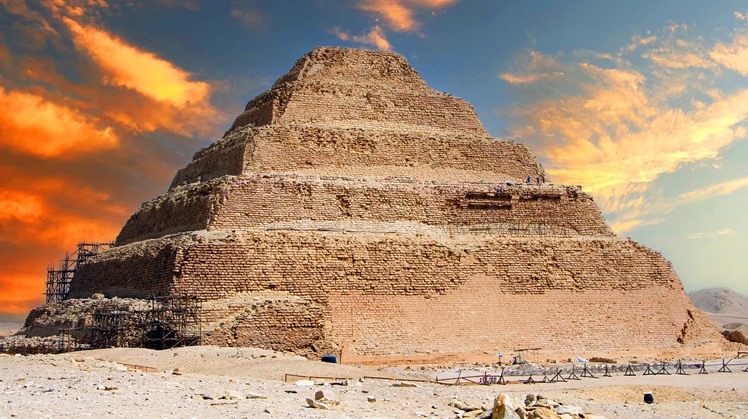Tales and secrets revealed by the ancient Egyptian through his great civilization that spans thousands of years, and still dazzles the world until now, so from time to time a mystery of that history that extends over several centuries is solved, some of which were recorded on the walls of temples at the time of ancient Egyptian writing and others that have not been recorded yet, but Discovered by archaeological treasures emerging from the ground.
Our story today is about the Third Dynasty, which began with King Djoser assuming the throne after his predecessor, King Khasekhemwy, "the last king of the Second Dynasty, and it is very likely that he was his younger brother, not his son, and is considered the founder of the Third Dynasty, and his rule lasted about 29 years, and he was one of the most important kings of this era."
King Djoser built two tombs for himself, one of them as the king of Upper Egypt, which is located in the north of "Al-Arraba", and the second tomb was built for him as the king of Lower Egypt, and it is located on the plateau in which the "Memphis" cemetery is located and is now known as Saqqara, and this tomb is the oldest pyramid Known so far in history, which is now known as the Step Pyramid, and the engineer who laid the design of this strange building, which is considered the largest stone building of his time in the Nile Valley, is "Imhotep", who was in addition to his brilliance in engineering, familiar with the science of medicine and well-established in management, And he had great fame in his era and beyond, so that he was considered as a god of medicine.
King Djoser is considered the first king to penetrate into Lower Nubia beyond the waterfall to the pyre midway to the second waterfall, and he is the one to whom Greece attributes the conquest of the region known as "Dodekashen", meaning the region that is about 143 kilometers long from Elephantine onwards.
Djoser succeeded some kings whose history is still obscure, the first of which is "Sankhat", and it seems that this pharaoh ruled all of Egypt, as we found his name engraved on the rocks of Wadi Maghara in the Sinai Peninsula, and he assumed the throne after him, according to the "Ancient Egypt" encyclopedia of Dr. Selim Hassan, a king called Haba, then the pharaoh Neferka, and we do not know anything about them.
As for the last king of this family, he is the pharaoh "Ho" and he is called "Huni". This is the direct ancestor of Pharaoh "Snefru", the founder of the Fourth Dynasty.
 Sun, Mar. 26, 2023
Sun, Mar. 26, 2023